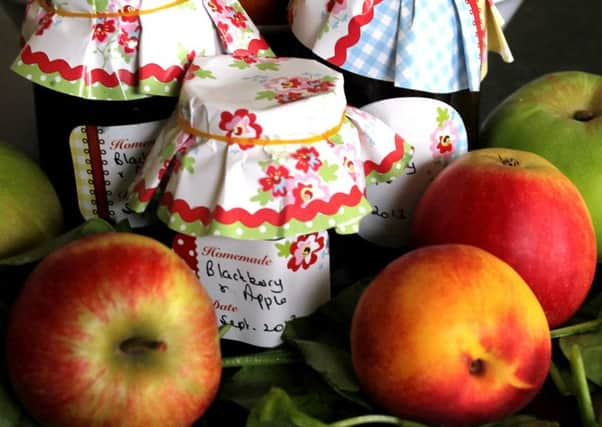Gardening: British to the core


Apples – and pears, apricots and cherries – are fantastic fruit-bearing trees and many are suitable for even small gardens.
Fruit trees are beautiful when in blossom and bountiful when laden with fruit. They also provide an excellent source of food and shelter for wildlife. And if you don’t want to harvest them, just enjoy them as trees – for their flowers, their leaves and their colourful fruit.
Advertisement
Hide AdAdvertisement
Hide AdFruit is often portrayed as a symbol of abundance and has been associated with goddesses of fruitfulness, plenty and the harvest – and the apple, of course, merits a special mention for its role in the Garden of Eden.
The choice of trees is staggering and if you don’t want to grow them for their fruit, there are plenty of varieties available, such as the ever-popular Malus “John Downie” which has been given the RHS Award of Garden Merit.
Single white flowers adorn this tree in May and are followed by an abundance of large crab apples. The fruit is considered to be great for jam and wine making.
There are hundreds more from which to choose, but bear in mind their eventual size and their likes and dislikes. Know your garden’s soil and situation and always plant accordingly.
Advertisement
Hide AdAdvertisement
Hide AdIf you haven’t sufficient space for a conventional fruit tree, try growing a specimen whose rootstock has been chosen specifically to keep things small. It will need regular care and attention, but it should stay small and perfectly proportioned.
If you love all things apples, you may like to know that Apple Day 2015 (a celebration of this wonderful fruit) is on October 31, but there are plenty of apple-orientated events to enjoy before then, including one at Newby Hall, near Ripon, from 11am-4pm on September 27, to include talks on the historic orchard and fruit trees at the stately home along with apple-throwing, races and games all with an apple theme. For more details go to www.newbyhallandgardens.com.
• You can read all you want about pruning late-flowering shrubs, but many people are as confused at the end as they were at the beginning.
Is there really a hard-and-fast rule for cutting back the likes of buddleia and clematis? Do you do it now or next spring? Will Huddersfield Town win the FA Cup? Do pigs really fly?
Advertisement
Hide AdAdvertisement
Hide AdThe answer to the first question is that people tend to prune more or less when they feel like pruning, often without doing any damage. However, many a gardening book will tell you to prune late-flowering shrubs in February. But only in the relatively softer, lowland areas of our county would I ever consider pruning in the depths of winter, and only then if there was no other option.
It’s usually best to leave buddleias until towards the end of March when you can take off last year’s growth (although I know some gardeners who hack theirs in October). But shrubs to tackle earlier include the hardy fuchsias, some Ceanothus and the sunny Santolina, which can be given a short back and side to two buds of last year’s growth.
And, if you have a late-flowering clematis, such as “Lady Betty Balfour”, “Madame Baron Veilard”, “Madame Edouard Andre”, “Madame Julia Correvon”, cut them back at the same time as buddleia (March!), to about 30cm from the ground, leaving two sets of healthy buds. Prune, and prune hard. It will mean removing a great mass of foliage, but nothing is lost, as none of it will produce a single flower the following summer.
And anyone who still grows roses can also prune them in late autumn or early winter, removing dead and damaged growth and any thin stems which could get blown about by winter winds, loosening the rose’s roots.
Advertisement
Hide AdAdvertisement
Hide AdThen, come the following March, get the secateurs out again and cut out dead and damaged wood and any weak growth. What’s left should be trimmed back to a healthy bud. The idea is to create an open framework where air and sun can penetrate to help produce healthy growth and superb flowers.